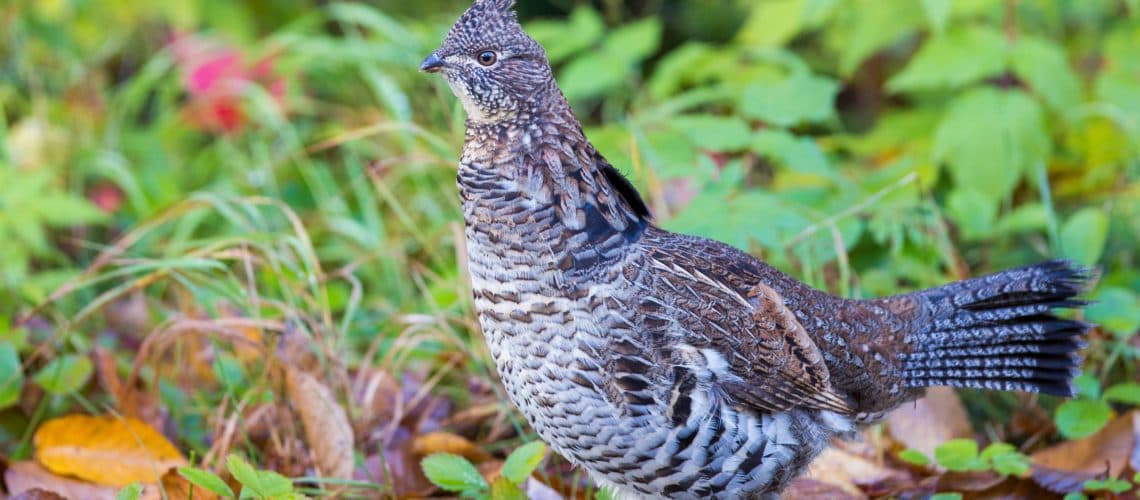
The Ruffed Grouse is a popular upland game bird of medium size and is recognized by it’s brown, gray, white, and black plumage – this helps it blend in into its preferred young forest habitat. They feed mainly on plant matter, including leaves, shoots, nuts, and buds. Adults and chicks also eat insects, which provides the growing and developing young the high-protein it needs. Ruffed grouse frequent abandoned farm fields grown up in shrubs and young trees and areas that were logged in recent years. They also prefer where briars and small-diameter saplings grow thickly, woods edges, hillsides and ravines with scattered clearings and fringes of shrub swamps.
During the spring breeding season, males attract females by hitting their wings while sitting exposed on downed woody debris such as logs and stumps – sometimes referred to as drumming. After mating, ruffed grouse hens build a rudimentary nest on the ground at the base of a tree, in thick brush, or tucked up against a log, rock, or exposed root. A young forest can provide a good habitat for ruffed grouse for 20 years or longer, depending on what tree species are present and the type of region they are in. Females may nest in slightly older and more open forest stands that offer ample protective canopy cover overhead. They do not migrate and their populations vary across the species’ range, depending on how much young forest habitat is available to them – this makes trees just as important as food and water for their survival.
An array of regrowing young forest and shrublands is the ideal habitat for the ruffed grouse because it offers different resources that they will need throughout the year. Timber harvests provide good food and cover, particularly logging conducted in forest stands that have aspen, quick-growing trees whose buds provide important winter food.
